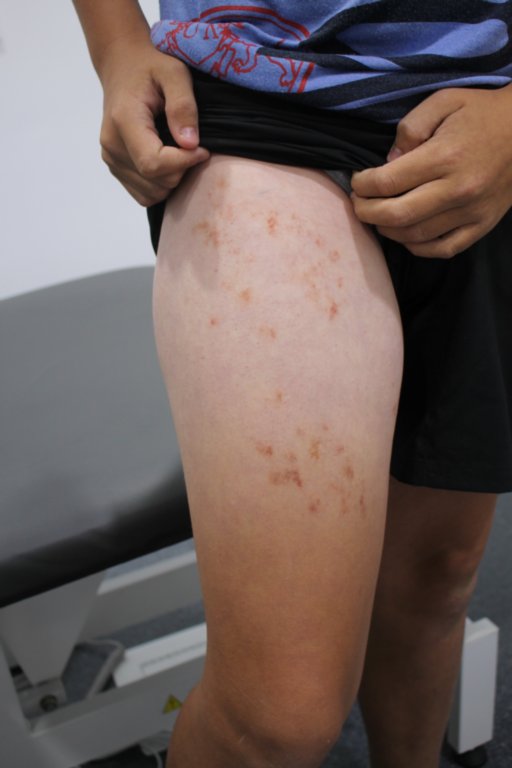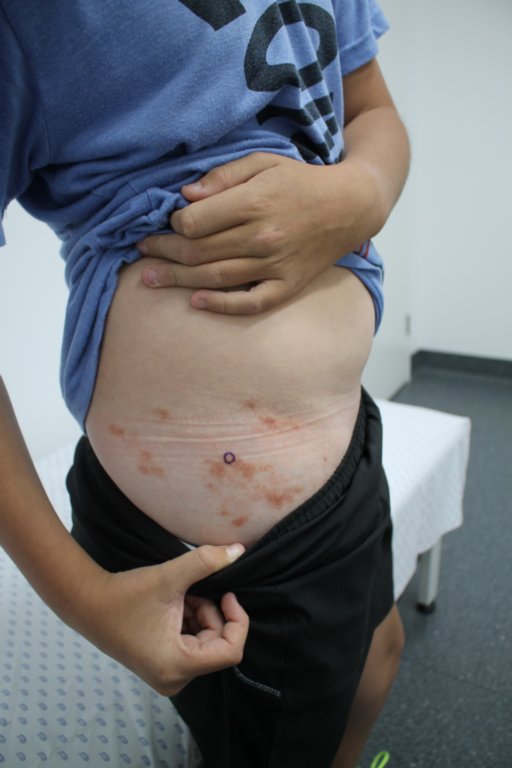

Diagnosis: Lichen Striatus
Description: Orange papules
Morphology: Papules,brown
Site: Abdomen
Sex: M
Age: 13
Type: Clinical
Submitted By: Ian McColl
Differential DiagnosisHistory:
Case of Dr Vanessa Huang
| 13 years old boy Rash started on R) thigh about 6 months ago. Gradually spread up to R) hip and R) abdomen. Non itchy. Not painful. He is quite self conscious due to the appearance. OE: brown color non scaly. Non blanchy. Biopsy result CLINICAL NOTES: Right hip rash appeared first on thigh right then spreads to right lower abdomen, non the blanchy non scaly, 4 of the lines of Blaschko DDX lichen striatus, incontinentia pigmenti (unlikely, as male), digitate dermatosis, epidermal naevus, linear porokeratosis
MACROSCOPIC DESCRIPTION: Specimen labelled: 'Right'. A 5 mm core of skin 3 mm deep, with a red-brown rough surface. Bisected transversely and all processed. 2-1A. HY
MICROSCOPIC EXAMINATION: Sections through multiple levels show skin including dermis. There is compact keratin with very focal parakeratin overlying epidermis with basal vacuole Interface reaction and a superficial dermal lymphocytic infiltrate. There is no spongiosis. There is a superficial lymphocytic infiltrate with extravasation of erythrocytes. There are no fungal elements seen on PAS stained sections. There is no evidence of dysplasia or malignancy. Seen with Dr P McQuillan
CONCLUSION: RIGHT HIP/LOWER ABDOMEN RASH, BIOPSY: FEATURES FAVOURING LICHEN STRIATUS (SEE COMMENT)
Comment: Overall, based on the clinical the features favour lichen status. In these into the, erythrocyte extravasation is unusual however the lesion may have been scratched. The main differential diagnosis based on histology is pityriasis lichenoides et varioliformis acuta (PLEVA), however this is unusual is limited to one body part. Drug reaction unlikely in this age group. Viral exanthem can also be considered however distribution makes it unlikely. There are no histological features to suggest Incontinentia pigmenti, digitate dermatosis, epidermal naevus or linear porokeratosis. Furthermore, Incontinentia pigmenti is a lethal in males unless there is genetic mosaicism.
|
The orange colour is presumably due to the red cell extravasation


